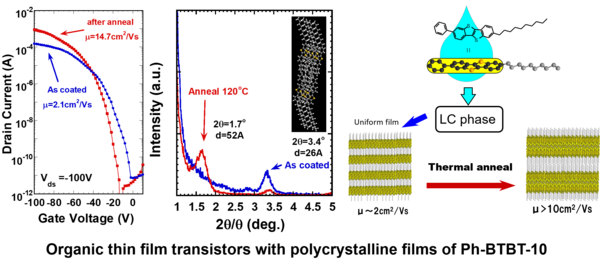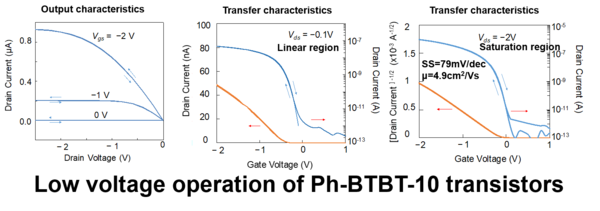Top > Research > Devices Using Liquid Crystalline Organic Semiconductors
Devices Using Liquid Crystalline Organic Semiconductors
Liquid crystalline phenyl-benzothienobenzothiophene derivatives (Ph-BTBT-10) can be easily fabricated by a solution process using liquid crystalline properties to produce polycrystalline thin films with high flatness and perpendicular orientation of the molecules on substrates. In the polycrystalline thin film fabricated via the liquid crystal phase, Ph-BTBT cores are interpenetrated in a monolayer crystal structure, but after a short time of thermal annealing at 120°C for 5 minutes, the crystal structure changes to a bilayer crystal structure with the Ph-BTBT cores facing each other.H. Iino et al. Nature Communications (2015).

In thin-film transistors with self-assembled monolayers that reduce contact resistance with electrodes and interface traps with gate dielectrics, devices can be operated at voltages as low as 2 V and have small sub-threshold swings (79 mV/dec).
M. Kunii et al. IEEE Electron Device Letters (2016).

Currently, we are also researching the integration of transistors, organic EL, and organic photodiodes as devices using liquid crystalline organic semiconductors.

